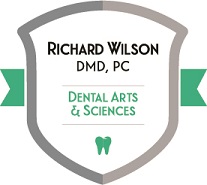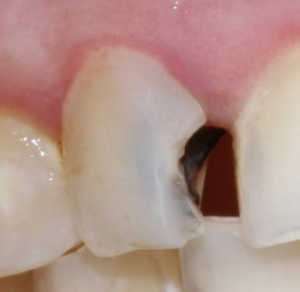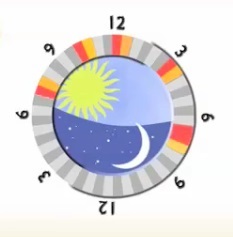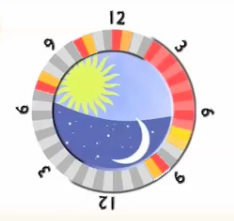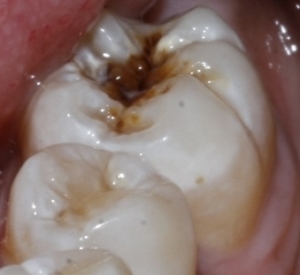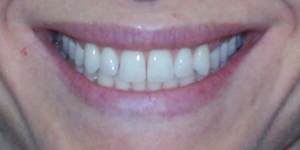How to Prevent Cavities – Part II
Now let’s get down to the tactics of preventing tooth decay.
I: Frequency
The over-riding, by far most-important factor in preventing cavities is the frequency that any and all forms of simple sugars are consumed throughout the day. And night, for that matter. Not the total amount–the frequency.
Referring back to our food lists on the previous page, let’s consider raisins, a quite healthy food, yet one that contains a good deal of simple sugars. What does this mean for our teeth? Eat a hundred of them on granola cereal (also on our danger list) every morning and they’ll never cause us a cavity. But eat one raisin every twenty minutes throughout the day, and you won’t have much left of your teeth in six months.
Strange, right? Now why would that be?
It’s because the clearance time of the acids produced by Strep mutans, in a healthy person with good saliva flow, is about twenty minutes to half an hour. Thus, it stands to reason that the worst possible thing you can do to your teeth is to eat or drink substances that contain simple sugars once or twice an hour, all day long.
That’s the key point, the key to maintaining healthy, damage-free teeth, so I’ll say it again in a different way:
Don’t overdo the ***frequency*** of sugar in your diet.
To help visualize this, some years ago, I created the “Caries Clock.” Caries is the scientific word for cavities. The Clock is also on our website:
http://www.smilephiladelphian.com/caries-clock/
Here, we will take three images from our Caries Clock and explain sugar frequency.
Let’s assume that most American meals include at least one item that contains simple sugars. That’s true more often than we’d like to think, because even a sauce, condiment (glorious ketchup!) or accompanying drink is all it takes to fire up all those greedy little Strep mutans.
Now let’s draw a 24-hour clock. We will light up mealtimes in red to represent increased acidity in the mouth, and the half-hour acid-clearing times in yellow. (Brushing our teeth shortens the yellow times; let’s leave that out for the moment though.)
Here’s what our day looks like if we only eat three meals, dwell over our dinner, and never snack:
We can see that there are vast passages of time, most of the day and night really, where the acid-producing Strep mutans are quiet. Our mouth is at rest, and our teeth are not being attacked by acids. The relatively brief red and yellow periods of high acidity are, in fact, so brief that we could eat and drink just about anything and remain at very low risk for tooth decay.
But can you go all day without snacking? I often can’t. On days when our dental practice starts at 7:00 AM, I arise and breakfast so early that I’m hungry for lunch by 10:00 AM. So here is our day if we grab a bite on the fly now and again:
Still not terrible, but we do get a sense of higher risk of decay. It depends on what the snack is, as well. I’m quite fond of cashews, and if that is all I munch on, they cause no high-acid period of decay risk. They do not add a red zone. Nor does a nice L’Amuse Gouda or Challerhocker cheese. Trail mix though, with nuts, raisins, granola and so on–that causes a red period of acidity. So does fruit.
Here, then, is the last Caries Clock outtake that we will consider:
This is more common in America than we’d like to think. This pattern of nearly constant red represents the college student who sips at a soda all afternoon while they study, or the tennis prodigy who runs from the baseline to the Gatorade bottle after every point. The city employee who sips sugared coffee and snacks on dried fruit and the odd chocolate-covered peanut all day long. The person with dry mouth who gets addicted to Werther’s Originals and doesn’t give a thought to sugar because the advertising clearly states “The Classic Candy made with Real Butter and Fresh Cream” on every package.
There are millions of variations. They all have one thing in common though: Any such dietary pattern is absolutely guaranteed to wreck your teeth by decay.
My preventive, wellness-oriented advice is this:
If you’re getting cavities, consider the frequency of your food and liquid intake. Think of our Caries Clock and what it teaches. If those foods and drinks contain simple sugars–if they taste sweet–pull back on the frequency. And where possible, rinse your mouth with water or brush your teeth after meals and snacks.
Without sugar, you can’t get cavities. And without cavities, you’ll keep your teeth.
Next page, we will explore the various secondary ways in which we can prevent cavities.
http://www.smilephiladelphian.com/how-to-prevent-cavities-iii/
